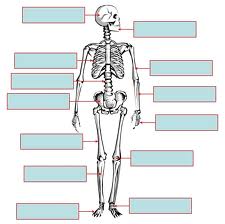In completing my Bachelor of Education, I have done a lesson plan based on students’ interests and learning profiles. Therefore the activities I designed are based on students’ interests and how they like to present their learning. I initially conduct a survey to find out what the students are interested in and what mode they would choose to present in. This allowed me to group my students. The students are therefore working at their readiness level and at the appropriate level of challenge (i.e., at their zone of proximal development) which then promotes learning (i.e., growth).
Within my lesson plan I have included explanations about why I chose to do certain things and this will demonstrate my knowledge and understanding of strategies for differentiating teaching to meet the specific learning needs of students across the full range of abilities.
Differentiated Lesson by Interest_Learning Profile
While on practical experience I also had a student with low literacy levels so I had to provide him with my PowerPoint slides so that he could review what I had talked about in class and I ensured that I did not place too high demands on him. I always gave him information in dot point form and with images for support. Also when it came time to do the unit test I was able to sit out in the corridor with him and I read out the test questions to him and he answered verbally back to me. I then wrote down exactly what he said like dictation. I was then able to mark his work exactly the same as the rest of the class. This allowed him to participate in a meaningful way and he was not excluded.
Similarly in my year 8 Science class I had to provide extra help to two students in particular. I was able to manage this by giving them extra hints on worksheets and extra helpful notes. Below are two different bone worksheets that have been differentiated for students needs.
I also had students in my year 8 Science class who were into Drama, Art and Singing so we presented a song about Digestion on Grand friends’ day.
This video shows a differentiated teaching style to help students understand digestion.
Within assessment tasks I also do not limit my high achievers by including a word count or page count. I allow them to go above and beyond. I do not like to put a lid on them.
I also encourage them to be creative in their presentation methods which allowed some students to create working models, other students dressed up as aliens and scientists and presented their assignment as a role play.
This is the task discussed above:
Earth, Sun and Moon Assignment
This piece of evidence shows that for some students I provide them with additional resources that meet their learning needs. This book is at a lower literacy level but allowed this student to access the curriculum and participate in the lesson. The other image shows a model that was created. It demonstrates the orbit of the Earth around the Sun, and the Moon around the Earth. The Sun is a light bulb connected to a battery pack and when the switch was turned on the light/Sun did light up. The assessment task mentioned above allowed this student to go above and beyond what was expected in the task. There is another image included where a student went above and beyond creating a water saving device for a Science task.
I have included a learning activity for students based on Blooms Taxonomy where all students can have success and work through each stage. See page 5.
I have developed and used teaching activities that incorporate differentiated strategies to meet the specific learning needs of students across the full range of abilities.
